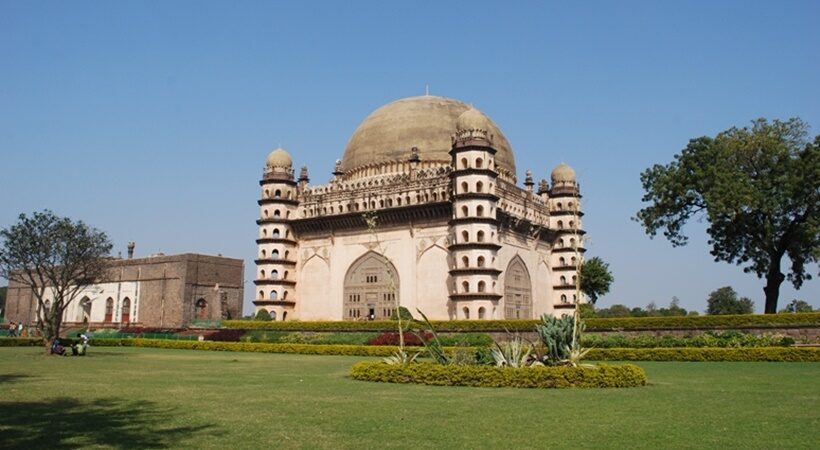Gol Gumbaz is a stunning example of the ingenious engineering of the late medieval period of India. The structure awes the visitors at first glance owing to its massive dome. Situated in the town of Vijayapura or Bijapur, the site is well connected by road from Bengaluru. An imposing structure, the Gol Gumbaz towers 51 meters above the surrounding city of Vijayapura and represents one of the most important examples of late Indo-Islamic architecture. The chief architect of this massive structure was Yaqut of Dabul. Meaning “circular dome”, this mausoleum is most famous for its massive crowning feature, which is not only architecturally impressive but also houses a sonic surprise!
With a diameter of 44 meters, the dome of Gol Gumbaz ranks among the largest domes of the pre-modern world and is supported by a series of interlocking arches without any columns. It is the second-largest dome ever built, next in size only to St Peter’s Basilica in Rome. A balcony rings around the interior of the dome, creating the so-called “whisper gallery” where any sound, loud or quiet, is amplified and carried throughout the cavernous space, ringing off the concave walls and echoing back a dizzying number of times.
It is constructed in such a way that even the feeblest of sounds, like a drop of a pin, can be heard distinctly from across a space of 38 m in the Whispering Gallery. The acoustics here are such that any sound made is said to be repeated 10 times over. In the dim twilight of the gallery’s interior, hovering 33 meters above the main chamber below, the effect is truly surreal.
Source: Wiki Commons
Gol Gumbaz was built as a mausoleum for Sultan Mohammed Adil Shah, the seventh ruler of the Adil Shahi dynasty and head of the Bijapur sultanate. It is intriguing to note that Mohammed Adil Shah started the construction of his mausoleum, the Gol Gumbaz, even before he ascended the throne in 1627. The construction of the Gol Gumbaz went on for 20 years until the year 1656 and stopped only with the death of Mohammed Adil Shah. The grand design of Gol Gumbaz was never completed and remains a single dome structure.
Its massive single chamber covers 1,700 square meters and sits atop a basement tomb containing the remains of the sultan, as well as those of his two wives, his mistress, his daughter and his grandson. A seven-storey-tall minaret containing stairs that provide access to the whispering gallery graces each corner of the building. The four octagonal towers, which adorn the corners of the main structure, are awe-inspiring on their own.
The heavy influence of Vijayanagar brackets under the cornice with Persian motifs can be seen on these minarets. These make the building a mix of aesthetic, cultural and architectural styles. Gol Gumbaz complex includes a mosque, a Naqqar Khana (a hall for the trumpeters) and the ruins of guesthouses. In the surrounding ornamental gardens, there is an archaeological museum as well.



















